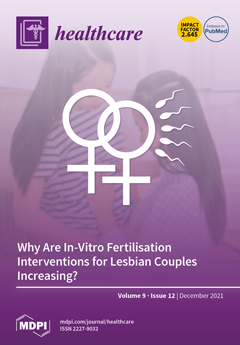Open AccessArticle
How Did the COVID-19 Pandemic Effect Dental Patients? An Italian Observational Survey Study
by
Gianna Maria Nardi, Roberta Grassi, Felice Roberto Grassi, Roberto Di Giorgio, Fabrizio Guerra, Livia Ottolenghi, Giovanna Acito, Nasrin Basari, Simone Bisegna, Lorella Chiavistelli, Roberta Cimarossa, Arcangela Colavito, Luigina Figlia, Claudio Gabrielli, Silvia Sabatini, Maciej Jedliński and Marta Mazur
Cited by 6 | Viewed by 2589
Abstract
The primary aim of this observational survey study was to assess patients’ attitudes toward clinical dental practice during the COVID-19 pandemic; the secondary aim was to evaluate patients’ attitudes towards oral health by maintaining an appropriate lifestyle and oral hygiene at home. The
[...] Read more.
The primary aim of this observational survey study was to assess patients’ attitudes toward clinical dental practice during the COVID-19 pandemic; the secondary aim was to evaluate patients’ attitudes towards oral health by maintaining an appropriate lifestyle and oral hygiene at home. The questionnaire was developed using Google Forms. The questionnaire consisted of three parts: Part A—geographic, demographic, and personal data; Part B—patients’ attitude toward oral health selfcare and lifestyle; Part C—patients’ attitude toward dental practice. This survey, conducted during the months of November and December 2020, enrolled 1135 subjects throughout Italy. All data were statistically analyzed. COVID-19 has changed patients’ approach to dental procedures. Most of the people interviewed lived in families, and their greatest fear was infecting a family member. Restrictive measures forced people to stay at home, which led to an increased consumption of various types of food, including cariogenic foods. People said they felt safe when they went to the dentist, but they also paid special attention to measures to prevent contagion. Among the measures that should be introduced in similar situations in the future, people wanted telemedicine, a phone recall, and the possible use of video clips for home oral care instructions.
Full article
►▼
Show Figures






